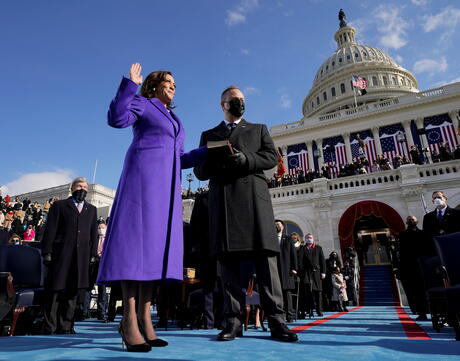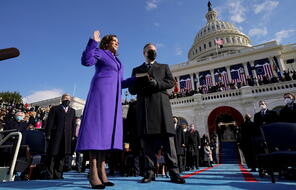
The Power of Representation: Patsy Takemoto Mink, Shirley Chisholm, and Kamala Harris
At a Glance
Language
English — USSubject
- Civics & Citizenship
- History
- Social Studies
Grade
6–12- Culture & Identity
Overview
About This Mini-Lesson
In 2020, Kamala Harris made history as the first woman, the first American of Asian descent, and the first Black American to be elected vice president of the United States of America. Her election inspired Ashton Mayo-Beavers, a freshman at Mercer University in Georgia, to say:
There already are so many great local leaders that are women of color, and that’s amazing. But the fact is, we will have a woman vice president who is a person of color that’s going to open the doors for so many people to envision themselves as our nation’s future. 1
Kamala Harris is an inspiring “first” in many ways, but the path to her election was paved by many other women and people of color. Two of those women were Patsy Takemoto Mink and Shirley Chisholm; both were political trailblazers. In 1965, Mink became the first Asian American woman and the first woman of color to serve in the US Congress when she was elected to represent Hawaii. Chisholm was the first Black woman in Congress, representing New York beginning in 1969. Both Mink and Chisholm competed in the 1972 presidential election, and both were later awarded the Presidential Medal of Freedom, the United States’ highest civilian honor.
In this mini-lesson, students learn about the groundbreaking careers of Patsy Takemoto Mink and Shirley Chisholm, consider the significance of Vice President Kamala Harris’s election, and explore the power of representation.
- 1Ashton Mayo-Beavers in Caroline Bauman and Gabrielle Birkner, ‘This is something I can do now’: What Kamala Harris’ ascension means for girls of color, Chalkbeat, January 19, 2021.
Activities
Activities
Materials and Downloads
Resources from Other Organizations
Unlimited Access to Learning. More Added Every Month.
Facing History & Ourselves is designed for educators who want to help students explore identity, think critically, grow emotionally, act ethically, and participate in civic life. It’s hard work, so we’ve developed some go-to professional learning opportunities to help you along the way.
Exploring ELA Text Selection with Julia Torres
On-Demand

Working for Justice, Equity and Civic Agency in Our Schools: A Conversation with Clint Smith
On-Demand

Centering Student Voices to Build Community and Agency
On-Demand















